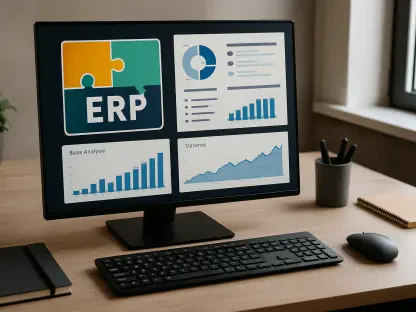As we traverse the digital era, mobile application development has become a cornerstone for many businesses seeking growth and innovation. Projected to achieve a staggering value of 21.5 billion USD by 2032, the Mobile Application Development Platform (MADP) market is riding a wave of technological advancements and changing business paradigms. The anticipated growth rate, calculated as a compound annual growth rate (CAGR) of 9.02%, reflects a significant shift in how enterprises prioritize their digital infrastructures and resources. In this context, MADPs—essential frameworks for creating, testing, deploying, and maintaining mobile apps across various platforms—are increasingly indispensable. They lay the groundwork for digital transformation, empowering startups and established companies alike to fulfill the rising demand for mobile-first, agile solutions.
Technological Trends Driving Market Growth
The Demand for Rapid and Cost-Effective Solutions
An undeniable trend simultaneously fueling MADP market growth and raising expectations across the industry is the clamor for faster, more cost-effective development processes. In today’s competitive world, where agility often determines success, businesses are seeking out MADPs that can seamlessly integrate with existing backend systems, thereby enhancing operational efficiency and reducing time-to-market. This is why cloud-based platforms are in high demand, offering adaptability, ease of deployment, and cost-efficiency. Companies can optimize their operations without tying up substantial IT resources, which is invaluable in today’s resource-strapped environment. This emphasis on adaptability is also reflected in the growing popularity of low-code and no-code platforms. These frameworks lower technical barriers, allowing non-technical users to engage directly in app development, thus democratizing the creation process. This inclusivity accelerates market expansion, offering wider access to such platforms and empowering a more diverse field of contributors.
Integration of Cloud and AI Technologies
Cloud-based platforms dominate the current landscape of MADPs, primarily due to their scalability and significant ease of integration with varying systems. The marriage of AI with MADP’s cloud capabilities is ushering in a new era of app development, wherein AI functionalities like predictive analytics, personalized user experiences, and intelligent automation play pivotal roles. Providers are racing to build more robust, sophisticated systems that align with the technological trends shaping user expectations and industry standards. Innovations in artificial intelligence and machine learning provide the tools developers need to deliver intelligent applications with minimal coding, thus extending the capabilities of even non-experts. As businesses pivot towards these tech-forward solutions, they enhance the likelihood of their apps succeeding in a market flooded with competitors vying for users’ limited attention span. The powerful combination of AI with cloud-based infrastructures not only bolsters the effectiveness of MADPs but also prepares businesses for an increasingly mobile-centric future.
Market Segmentation and Differentiation
Platforms and Deployment Models
MADPs can be dissected and understood through several lenses, offering businesses a means to tailor their approach based on deployment type, platform type, end-user profile, industry, and geographic region. Deployment models split neatly between cloud-based and on-premise platforms, with the former gaining more traction due to its inherent scalability, ease of deployment, and cost advantages. Cloud solutions allow businesses to manage fluctuations in demand more efficiently and with less stress on resources. From a platform perspective, MADPs cater to an array of operating systems—most notably iOS, Android, and cross-platform tools that allow for streamlined development across diverse environments. Cross-platform tools, which enable developers to write code that runs across various operating systems, are particularly appealing as they drastically cut down on both time and financial investment. This trend highlights a critical market need: maximizing resource efficiency without compromising on compatibility and reach.
Industry Vertical Insights and End-User Adoption
MADPs’ powerful capabilities entice a broad range of industry verticals, each tapping into these platforms for their unique needs. Leading sectors include banking, financial services, and insurance (BFSI), healthcare, retail, IT and telecom, education, and government. These industries leverage MADPs to forge closer ties with clients, improve productivity, and streamline digital transformation initiatives. Large enterprises are typically the foremost adopters, drawn to MADPs’ structured approaches to mobile strategy. However, small and medium enterprises (SMEs) have also begun gravitating toward these platforms, recognizing their cost-effectiveness and intuitive interfaces as solutions adapt to smaller budgets and varied operational needs. This segmentation by end-user type—ranging from individual developers and SMEs to major enterprises—provides insights into how different users approach MADP utilization. While larger enterprises typically focus on advanced backend integration to bolster their expansive app portfolios, SMEs benefit from straightforward, scalable options that keep them agile in an ever-changing technological landscape.
Regional Dynamics and Key Industry Players
Geographic Market Distribution
The geographical distribution of the MADP market unveils a fascinating diversity in adoption and innovation. While North America currently commands the lion’s share of the market—spurred on by technological advancements and significant vendor presence—the Asia-Pacific region is noted for its fastest growth trajectory. Contributing to this is the region’s rapidly expanding smartphone user base and a burgeoning startup ecosystem driving innovation. Markets in India, China, and Southeast Asian countries, where mobile-first approaches are often intrinsic to new business models, are key players in this progress. Meanwhile, Europe continues to grow steadily, with its stringent data privacy regulations prompting secure development frameworks across key markets like Germany, the UK, and France. Latin America, Africa, and the Middle East, though currently emerging markets in this domain, offer substantial prospects for expansion due to improving internet infrastructure, rising SME activity, and government-backed digital services initiatives.
Competitive Landscape and Innovations
The competitive landscape of the MADP market is teeming with both opportunities and challenges. Major players continually push for innovations that will ensure sustained growth and the ability to meet the developing demands of clients. Companies like Microsoft, Oracle, SAP, Salesforce, and others are instrumental in driving MADP development. These companies offer unique capabilities—whether in low-code solutions, seamless integrations, or advanced AI applications—enabling businesses to adeptly address their specific needs. Notably, Microsoft has introduced pioneering AI functionalities with Power Apps, while Salesforce’s integration with Slack reflects its commitment to fostering collaboration. Collaborative ventures between MADP providers and cloud services such as AWS and Google Cloud further expand the tools available for developers, enhancing backend services and analytics capabilities. These innovations highlight the dynamic nature of the MADP market, where enterprises relentlessly pursue competitive advantages, crafting versatile solutions to tackle ever-evolving industrial requirements.
Future Opportunities and Challenges
Challenges and Risks in MADP
Despite the optimistic outlook, the MADP market is not without its share of challenges. Paramount among these are security concerns, given the extensive connectivity and data transactions inherent in modern mobile applications. Security developers need to be vigilant in handling sensitive information, as breaches can lead to significant reputational damages and financial losses. Platform fragmentation also looms large as a challenge, complicating the harmonization of apps across myriad devices, screen sizes, and operating systems. Additionally, while low-code platforms serve as useful tools for quick deployment, they may fall short of catering to all the nuanced complexities of specialized enterprise apps. This necessitates integrating more robust development strategies for high-stakes applications, ensuring they align with strategic goals and meet the specific functionality requirements of diverse stakeholders. With the rising demand for more sophisticated applications, developers must navigate these hurdles while maintaining the flexibility and responsiveness users expect.
Opportunities in Technological Advancements
The Mobile Application Development Platform (MADP) market is bursting with opportunities. Advancements in Artificial Intelligence (AI), Augmented Reality/Virtual Reality (AR/VR), and the Internet of Things (IoT) allow businesses to develop groundbreaking mobile experiences. Enhancing User Experience (UX) and User Interface (UI) through MADPs provides a significant edge to businesses. Customizing MADPs for specific industries, like adhering to regulations in healthcare or finance, can lead to expansive market growth. By effectively utilizing these emerging technologies, providers can not only advance their offerings but also carve out new spaces in a highly competitive market.
MADPs are essential as devices interconnect and user expectations increase, significantly impacting the type and scope of digital applications available to businesses. As companies adopt mobile-first strategies, MADPs secure their importance in the business world. Although challenges like security and platform fragmentation exist, the capacity for innovation and growth in this market is considerable. Companies that harness improvements in cloud technology, data analytics, and tailored solutions stand to gain substantially. The future for MADPs is bright, offering paths to competitive advantages in an era where mobile technology dominates.









